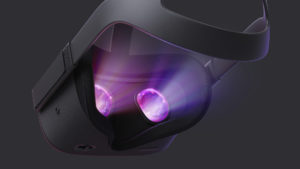What is Fortnite: Battle Royale?
Unless you have been living under a rock the last year, there is a good chance you have heard of the wildly successful game, Fortnite. In the off chance you haven’t heard of it, or you have but are not quite sure what it is, I will try fill you in. The premise is quite simple. 100 players drop into a large map collect guns and equipment and battle it out until one player remains in a Hunger Games like showdown.
Game Mechanics, Vibrant Colours and Accessibility.
Where Fortnite differs and succeeds in comparison to its competitors is in a couple of areas. Players are able to build structures such as walls and ramps to provide cover and traverse the map. The game is vibrant and colourful. This, along with the ability to play on almost all current gaming platforms, allows it to attract and retain a huge audience.
Fortnite: the biggest game on the planet.
In November 2018 Fortnite’s total player count broke 200 million. Creators, Epic Games also announced earlier that month that the concurrent player count peaked at 8.3 Million. The game has a huge online following with thousands of content creators across platforms such as Youtube and Twitch building communities around the game. In August, Fortnite was viewed for a total of 7.7 Billion minutes on Twitch.

Fortnite improving Unreal Engine.
The game and the surrounding community has been breaking records across the board. So it is no surprise that that Epic Games have been directing a lot of resources toward it. As well as creating Fortnite, Epic Games are the company behind the popular game engine, Unreal Engine. This engine is popular among virtual reality developers.
 Snapdragon powering VR.
Snapdragon powering VR.
Fortnite’s meteoric growth and unparalleled success on mobile platforms is driving Epic Games to implement huge improvements to the Unreal Engine. This is huge for VR because both the Oculus Quest and HTC Vive Focus run on the Snapdragon 835 processor, the same that appears in phones such as Samsung Galaxy S8 and Google Pixel 2.

Improvements in Unreal Engine 4.20.
In July 2018 Unreal Engine 4.20 was released. This update ushered in a whole suite of optimisations for AR, VR, Nintendo Switch, Android and iOS. The update contained over 400 mobile optimizations developed for Fortnite on iOS and Android. These optimisations included improved Android debugging, mobile landscape improvements and and occlusion queries on mobile. Unreal Engine 4.20 also introduced mixed reality support in early access, which was popular with developers who previously had to rely on third-party tools. Also Included in the update was the newer Oculus Runtime 1.25 as well as support for Apple’s ARKit 2.0 and Google’s ARCore 1.2.
Improvements in Unreal Engine 4.21.
In November 2018, Unreal Engine 4.21 was released. This update contained another raft of optimisations for mobile platforms. These included improved Vulkan support on Android which can run run projects up to 20% faster than the same project run on OpenGL ES. The program binary cache for Android was introduced which can be used to help improve shader loading performance and also reduce hitching due to shader loading on Android devices. The update improved GPU particle simulation performance on mobile which significantly reduces memory usage and improves rendering performance. For a full rundown of the changes in Unreal Engine 4.21 and more technical explanations, visit the update blog post here.
Fortnite in VR.
Whilst Epic Games has not announced a VR version of Fortnite, the updates to made to Unreal Engine because of the game will have a significant impact on the virtual reality industry. Developers will be able to provide better looking and more efficient VR experiences on the new generation of standalone VR headsets. If you are itching for a Fortnite VR fix, developers BigBox VR have got you covered. It is called Population: ONE. The game contains similar building mechanics to Fortnite. It is set to release for Rift, Vive, and Windows VR in 2019.
Looking to the Future.
These enhancements to Unreal Engine for mobile platforms, driven by the popularity of Fortnite, will prove to be influential in the coming months as adoption of untethered VR solutions increases in marketing and training. Business and enterprise are eagerly awaiting the release of Oculus Quest and HTC Vive Focus in western markets. The enhancement of performance and visual fidelity to Unreal Engine will enable companies like Activate Studios to take full advantage of these new virtual reality platforms to provide unparalleled immersive experiences in marketing, education and training.



 Snapdragon powering VR.
Snapdragon powering VR.

